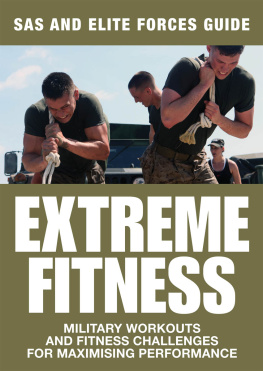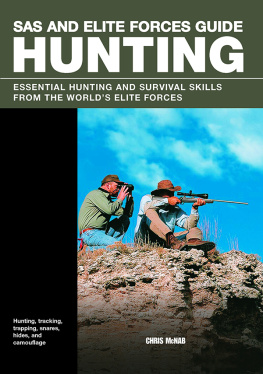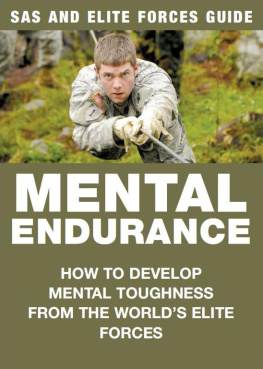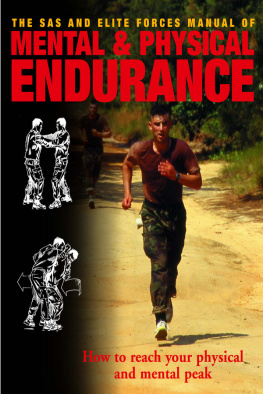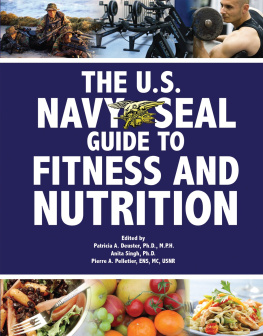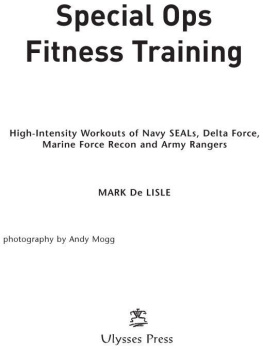EXTREME FITNESS
SAS and Elite Forces Guide
CHRIS McNAB

This digital edition first published in 2015
Published by
Amber Books Ltd
7477 White Lion Street
London N1 9PF
United Kingdom
Website: www.amberbooks.co.uk
Appstore: amberbooksltd
Facebook: amberbooks
Twitter: @amberbooks
Copyright 2015 Amber Books Ltd
ISBN: 978-1-78274-184-8
Picture Credits
All photographs courtesy U.S. Department of Defense
All rights reserved. With the exception of quoting brief passages for the purpose of review no part of this publication may be reproduced without prior written permission from the publisher. The information in this book is true and complete to the best of our knowledge. All recommendations are made without any guarantee on the part of the author or publisher, who also disclaim any liability incurred in connection with the use of this data or specific details.
CONTENTS
INTRODUCTION
I am a relative latecomer to the world of endurance events. Having invested much time in intense martial arts training and competition during my earlymid 20s, I then suffered the all-too-familiar drop in fitness during my late 20s and early 30s as the pressures of family and career crowded in. The stamina of my youth began to drain away slowly, but the desire to stay in shape nagged in the background.
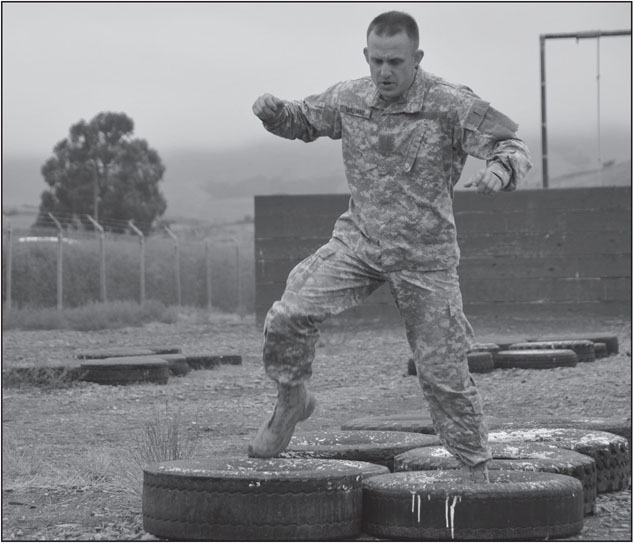
Military-style training aims to develop all levels of fitness, including the physical coordination required for this tyre-sprint obstacle.
The turnaround came in my mid 30s, when following some health problems I accepted that there were no excuses for a sluggish lifestyle. I decided to take up running in a serious way, and as I lived in Wales one of the more undulating regions of the U.K. this almost certainly meant I would become a hill runner.
I started small, with runs of less than 5km (3 miles), by pushing myself up the minor mountain just a mile from my front door. Playing the long game, I added small amounts of distance with each run, and started tackling new peaks. The biggest surprise was how much and how quickly I was hooked. I felt energized and renewed, and experienced the euphoria of conquering peaks and distances that just weeks before felt unobtainable. Soon I was running for hours not minutes, up slopes that bordered on climbs, tracking through the countryside of Wales. The new surge of fitness spurred me to add other activities, including weight training and circuit-training. By the time I reached 40, I was fitter than I had ever been in my life.
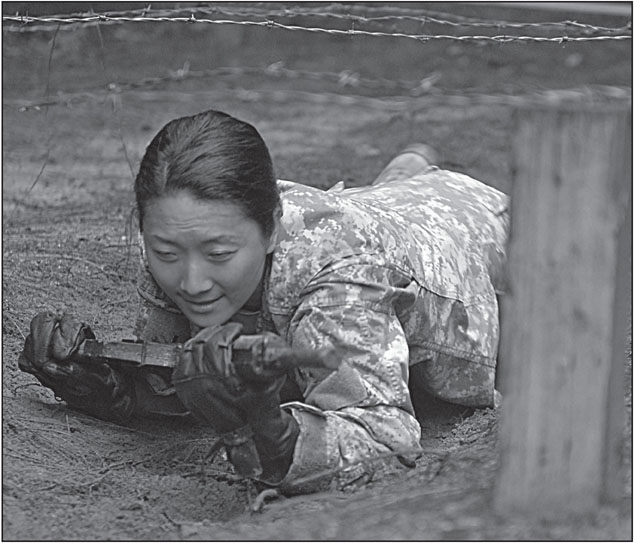
By using military PT techniques, which have an all-round focus on physical development, you will vastly increase fitness levels.
A particular inspiration for my activities was the military. As a military historian, as well as a sports enthusiast, I have always been slightly in awe of the incredible physical feats that soldiers perform, either in battle or in training. I run miles up mountains, but soldiers do the same while carrying limbdeadening loads of pack and weaponry. In the world of the Special Forces, the training and selection regimes would in many cases halt a professional athlete, the trials testing every aspect of the soldiers physical and mental courage nearly to destruction. Furthermore, the military has over the years developed vast expertise in the art of bringing people to the peak of their physical condition. In effect, armies run the largest fitness programmes in the world, globally taking thousands of men and women to exceptional levels of performance every year. Because of these programmes, there are few better organizations to teach us about how to develop extreme fitness.
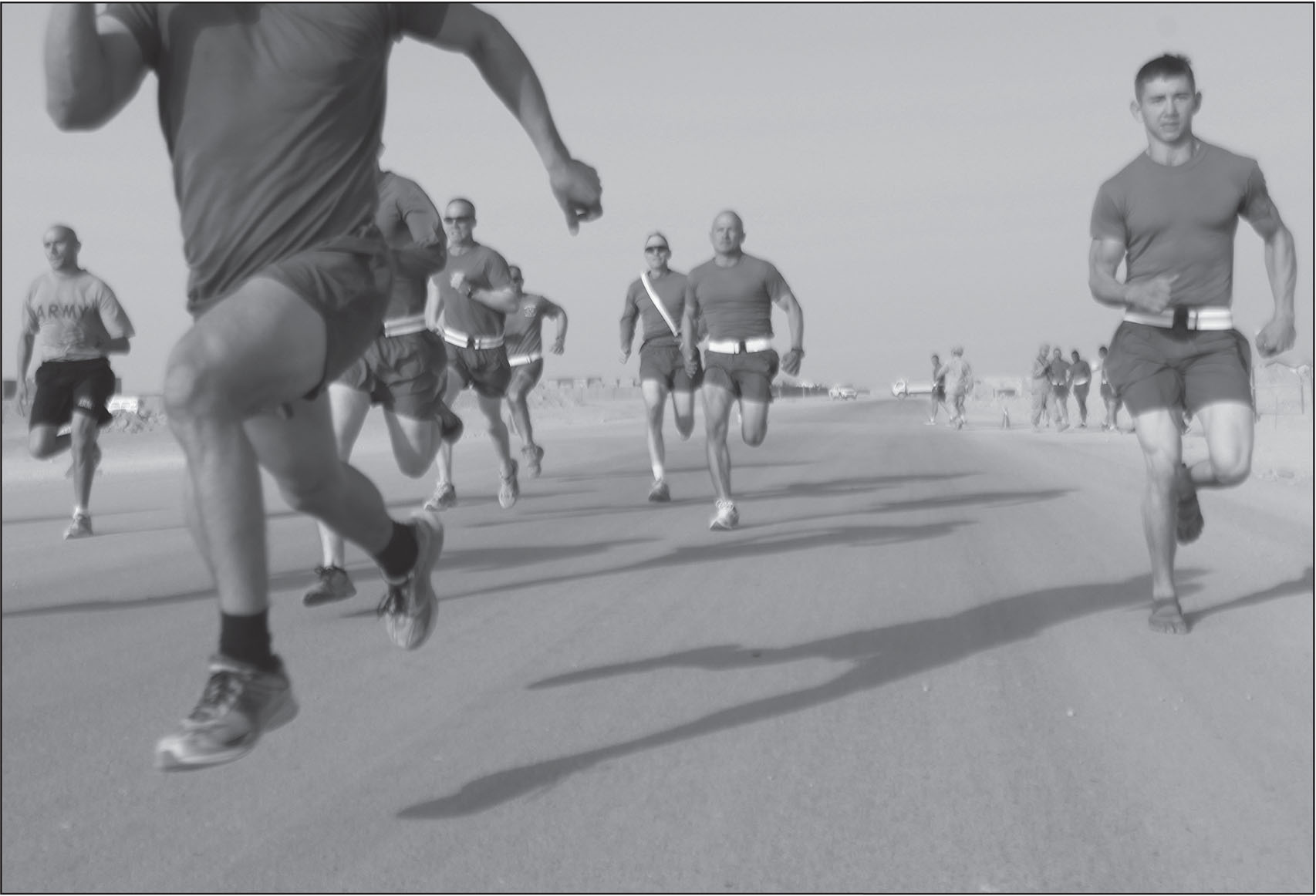
Military selection programmes demand superb aerobic endurance fitness, often fostered by long-distance runs.
This book is about developing your physical condition to its limits in sports ranging from running through to rowing. The advice is both practical (based on the latest research and expert advice) and mental those who possess extreme fitness need as much mental grit as bodily stamina. At every step of the way, we shall take on board lessons and insight from the military, particularly its Special Forces, whose personnel are exceptional endurance athletes. By adopting this perspective, the civilian athlete will discover new ways in which to excel, and tackle challenges that previously were beyond his or her reach.
Adult diet should include all major food groups, as contained in these MRE packs.
1
Achieving the standards of physical fitness possessed by elite soldiers is not for the faint hearted. Before you launch into any high-impact training programme, you need to make an honest judgement about your capabilities.
Preparing the Body
D eveloping extreme fitness is a laudable goal, but one that needs to be handled with some caution. There are no short-cuts to be taken here. There is no chemical, technology or technique that will take you from average fitness to super fitness in a matter of weeks. As we will see in this book, there are training programmes that can accelerate your physical development dramatically, but these will still require dedication and patience to implement for you to see the long-term rewards.
Before you embark on an extreme fitness programme, you need to do some basic physical housekeeping and some honest assessment. The fact is that high-impact training will place acute levels of stress upon your cardiovascular and muskuloskeletal systems. If you dont respect this fact by preparing your body through good lifestyle and fitness practices, the chances are that your training programme could end and for good in a nasty injury or other physical incident. Note that in basic military training, within every 100 male recruits an average of 612 will experience training injuries each month. In the Special Forces units, these rates can climb as high as 30 per 100. This data, provided in the United States by researchers Kenton R. Kaufman, Stephanie Brodine and Richard Shaffer, also provided some firm conclusions about the core risk factors in why the rates of injury were so high:
Parkour Training
Parkour demands exceptional upper-body and core strength, as well as excellent spatial judgement. All techniques should be developed at safe heights before testing on elevated buildings.

